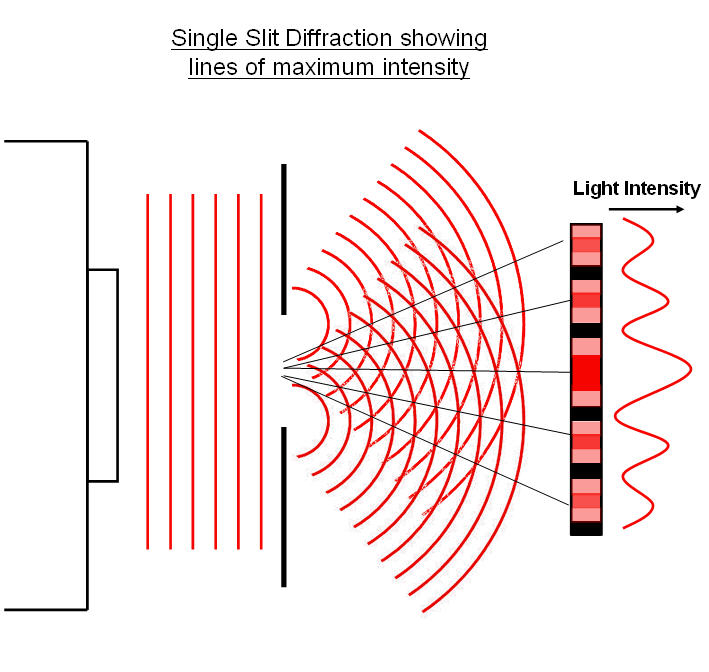

Also notice that the maximum intensity of the double slit is 4 units, the 3-slit case has a maximum intensity of 9 units, and for 4-slits it is 16 units, as we expect when the amplitude increases by one unit with the addition of each slit. What is the first-order diffraction angle of the laser beam after the aquarium is filled with water (n water 1.33) 1 Approved Answer. 'expected diffraction angle for first order reflection. When white light enters the grating, the light components are diffracted at angles that are determined by the respective wavelengths(diffraction). If we use Cu radiation as X-ray source, and the first order Bragg diffraction peak is found at the semi-angle 35 calculate the d-spacing of the crystal. Notice that the bright fringes for any number of slits occur at the same places as for the double slit (provided they have the same slit separation), and that the number of dark fringes between bright fringes goes up by one every time another slit is added. first order m1 dsinm 9 6 m500x10 sin 0.25 d2x10 14. When the laser light is incident normally on a diffraction grating the first order maximum is produced at an angle of 12. what is the distance (in pm) between the. Putting these functions into a graphing calculator confirms what we found above, as well as what we suspect about \(n\) slits – that there are \(n-1\) dark fringes between each maximally-bright fringe.įigure 3.3.3 - Comparison of Interference Patterns by Number of Slits Chemistry Chemistry questions and answers You would like to create a reflection grating like the one shown at the right, with an incident angle (θ) of 43°. Find the first order diffraction angle for light with a wavelength of 500 nm. when c rays of wavelength 0.090 nm are diffracted by a metallic crystal the angle of first order diffraction (n1) is measured to be 15.2 degrees.


 0 kommentar(er)
0 kommentar(er)
